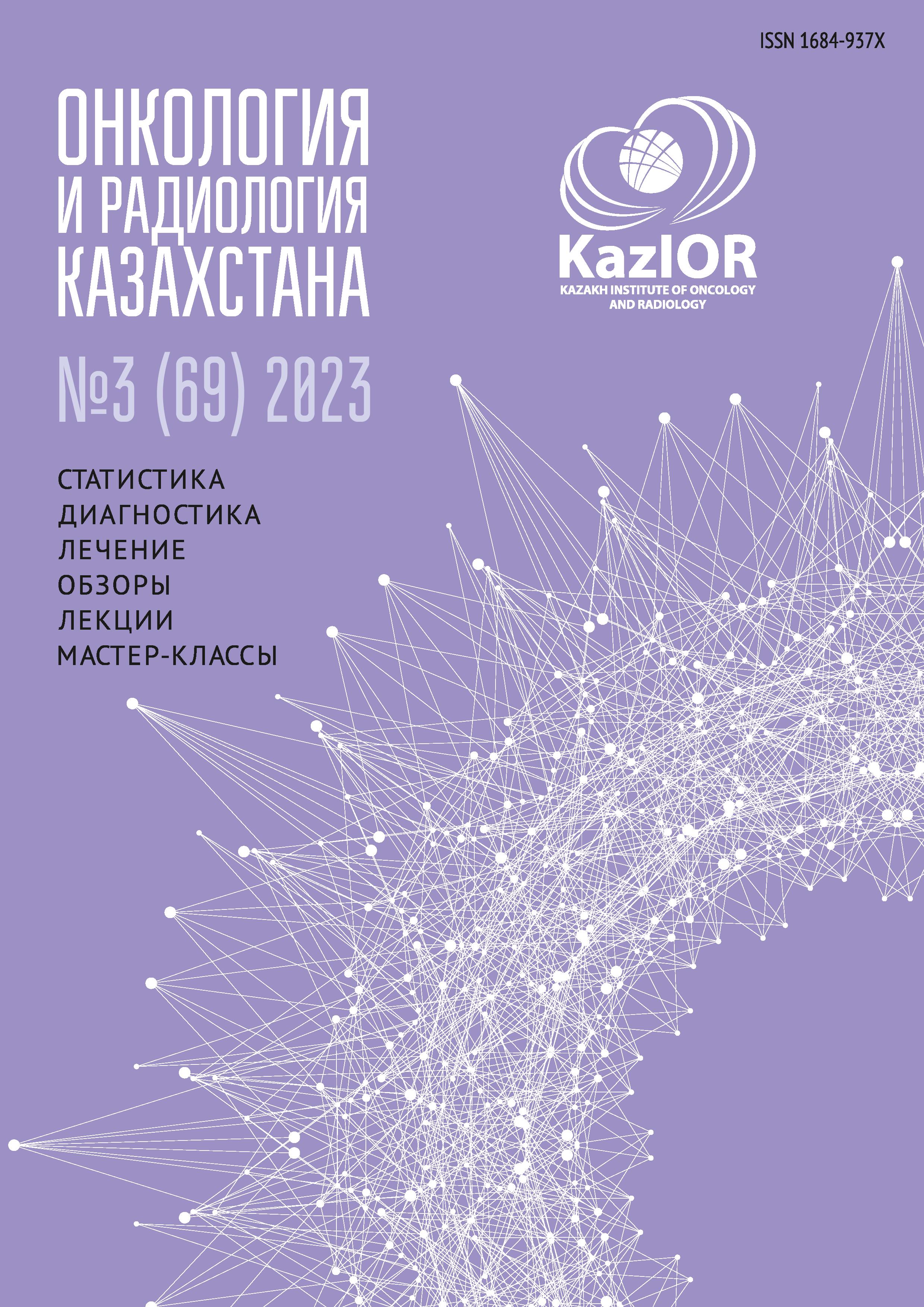The use of argon plasma coagulation in endoscopy
Keywords:
argonoplasmic coagulation (APC), Barrett’s esophagus, endoscopy, neoplasms, anastomosis failureAbstract
Relevance: Argon plasma coagulation (APC) is a minimally invasive, non-contact electrosurgery method. This procedure is performed in the following conditions: bleeding in hollow organs, including ulceration after radiation therapy, Barrett’s esophagus, with the germination of a malignant tumor through a stent, benign neoplasms, precancerous conditions, some malignant tumors at the earliest stages. In this article, the authors present the first and successful experience of the use of APC in Kazakhstan during endoscopic interventions in patients with various pathologies.
The study aimed to evaluate the effectiveness of the introduction of APC as an endoscopic treatment in patients with precancerous pathology and complications of surgical treatment in oncological patients.
Methods: A retrospective analysis of the use and effectiveness of AIC was carried out in 15 patients with various pathologies who were on inpatient treatment at the National Research Oncology Center (NROC, Astana, Kazakhstan) during 2022.
Results: Barrett’s esophageal APC was successfully performed in the NROC hospital in 6 patients, no signs of intestinal-type metaplasia of the esophageal epithelium were detected in the biopsy material. Two patients with post-radiation hemorrhagic proctitis underwent coagulation in Pulse 15Wt mode and argon flow of 0.4-1.0 L/min. A patient with the GAVE syndrome with hemorrhages underwent 2 sessions of APC in 35Wt mode with a gas flow of 0.8 L/min. In 3 patients with fistulas of the suture of the main bronchus, coagulation was performed after pulmonectomy and closure of the fistula was observed for 1 week. Two patients with esophagoenteroanastomosis failure underwent 2 sessions of APC using 40-watt argon with an interval of 5 days. After anterior rectal resection, the patient had a failure of anastomosis with a multi-chamber cavity and the presence of purulent contents. 4 courses of APC were conducted with an interval of 2 weeks, after the APC, the mouth of the main chamber narrowed, the discharge of pus stopped, as a result, there was a blind pocket up to 2.0 cm without additional chambers and signs of inflammation.
Conclusion: The presented article describes the results of the introduction of APC as an endoscopic method of treating patients with various pathologies in an oncological clinic, and based on these results, APC can be recommended for widespread implementation throughout Kazakhstan.

